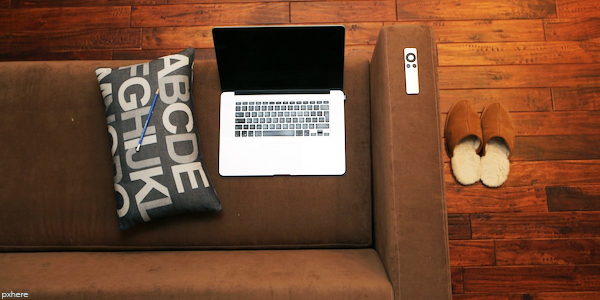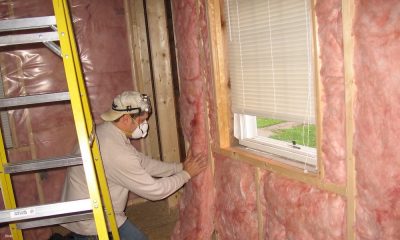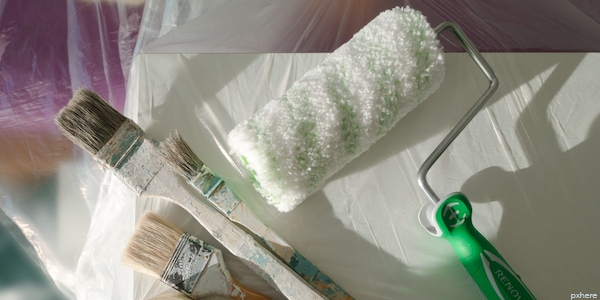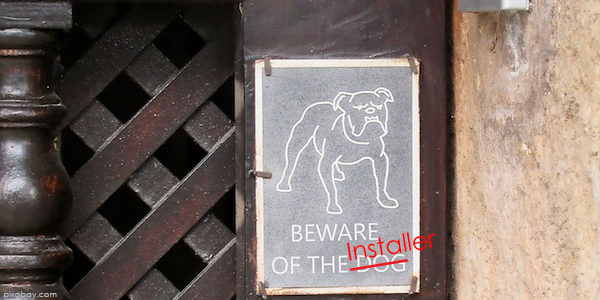Management
Overcrowding – Landlords Not Responsible
Reports that Landlords are attempting to increase profits from overcrowded rental properties has been refuted by Andrew King, Chief Executive of NZ Property Investors Federation in a news item on NZHerald today.
Yesterday a news item suggested maybe overcrowding was an initiative by greedy landlords to maximise profits with student accommodation in Auckland.

Reports that Landlords are attempting to increase profits from overcrowded rental properties has been refuted by Andrew King, Chief Executive of NZ Property Investors Federation in a news item on NZHerald today.
Yesterday a news item suggested maybe overcrowding was an initiative by greedy landlords to maximise profits with student accommodation in Auckland. However Andrew King says hot bedding and overcrowding is not landlord driven.
Hot-bedding is not so common among students it’s more prevalent among shift workers and landlords are less likely to be aware it’s happening. Overcrowding however is a cultural thing among students and it’s been happening for years.
Property management companies like Pedersen Property Management say their landlord clients are advised on expected rental return which is dependent on the number of bedrooms with one to two people sharing. The weekly rates obtained are mostly within current market guidelines. Regular property inspections have proven to prevent additional flatmates moving in unknowingly.
Rent increases in Auckland climbed 5.6 percent in 2015. This compares favourably to property value increases of 11.1 percent. Rent rises are unavoidable as Landlords have been lumped with higher costs including: insurance, rates and the Auckland region 70 percent LVR lending restriction.
This blog article was written for PropertyBlogs by Mobilize Mail.
Management
Home Insulation Requirements

Home insulation keeps your property warmer in winter and cooler in summer so it just makes sense to have at least the minimum depth of insulation in the ceilings and underfloors and also in the walls too if you can do it.
European countries are getting ready for an unprecedented heat wave of 40 degrees Celsius or more, and unfortunately, people perishing the heat is unavoidable. The old and young suffer the most in extreme heat so a home that has good insulation keeps its inhabitants comfortable.
Newer countries with milder climates have seemingly avoided building homes with much consideration of insulation requirements.
Many properties have just the lining and cladding between them and a cyclone, hurricane or heatwave. However, it’s becoming apparent that in countries like Australia and New Zealand, the rising costs in healthcare have their Governments focused on improving the quality of tenanted properties.
In New Zealand, the new Healthy Homes Standards has forced the hand of landlords to comply with insulation requirements by 1 July 2019. All rental properties must have adequate ceiling and underfloor insulation.
Insulation Minimum Depth Recommendations
The recommendations for the minimum depth of insulation for the ceiling, underfloor and walls depend on the climate, and severity of weather conditions.
The UK, USA, Canada and countries like Australia and New Zealand all have depth requirements, therefore landlords need to beware that there is no ‘one size fits all’ should they decide to take on the job of fitting out a rental property for compliance.
All new homes need to be fitted with insulation in time there won’t be a residential property without it.
How Insulation Works
For the nerdy, you’ll find how insulation works fascinating. However, for the purposes of this blog post, we can summarise it as a product measured in terms of its R-Value or depth, for its thermal resistance quality.
Insulating materials differ however their role is the same and that is to prevent heat flow. Stop the heat escaping from within the home to the outdoors via the ceiling, walls and floors and also prevent hot and cold air transferring from outside into the home.
To keep homes healthy humidity levels must be kept at a normal level. This can be dealt with by opening windows and doors, to air out the home. Remember mould love a warm moist environment, but at high levels mould can be dangerous to mankind.
Insulation Types
There are many different types of insulation including radiant barriers and reflective foils which are both highly reflective so heat is not absorbed. Bulky fibre materials can be blown into the cavity, which is great for walls and ceiling, and there are the standard sheets.
Some products are made from recycled materials, like plastic, and car tyres. There are natural products like wool, cotton and straw and of course, there’s the stable material fibreglass. The list of types of insulation is long and includes many other man-made materials usually byproducts of plastics, metals and minerals.
Insulation Costs
The cost of the product will vary depending on the quality and quantity required. Natural products like wool will be more expensive than some man-made options and be aware installation costs will be driven by supply and demand.
When there is a Government initiative at play with a compliance deadline to meet, installers will raise their fees accordingly. Landlords are recommended to get their rental homes insulated before their Government makes it compulsory and costs rise with demand.
Management
Attracting More Business Travellers To Your Auckland Airbnb Property

Business travellers are often considered the ideal Airbnb guest. Booking properties outside of busy weekends and holiday periods, reliability and the potential for repeat return visits, targeting business travellers with your Airbnb listing can prove a lucrative and low maintenance niche.
But how do you go about attracting such clientele? Well, there are several things which you can do to attract the business traveller to your Airbnb listing.
Location, Location, Location
The most crucial aspect of attracting business travellers is (unsurprisingly) location. With the vast majority of business travellers requiring access to the CMD, the closer you are to your city’s CBD, the better.
For Airbnb guests in NZ, the most popular destinations are Auckland, Wellington and Queenstown, for business travellers the most popular city is Auckland and with most searching for accommodation in the CBD, your property will need to be located here.
Create a space to work
With many business traveller working while they travel it is important to create and showcase an appealing workspace. A desk, comfy office chair, access to a printer and scanner, fast Wi-Fi – all paint a picture of productivity.
Be sure to portray this in your listing photos and highlight the existence of your work space in your property description.
Take a more hands off approach
While originally Airbnb was created to rent a room in someone’s home, it was since morphed into more of a solitary experience. While many still opt for the cheaper lodging alternative and enjoy the experience of getting to know their host, a business traveller expects more of a standoff approach.
In your listing description stress privacy and talk your property up as an excellent place to unwind after a long day.
Also try and make your check-in process as simple as possible as after a long flight or drive to the city the last thing a business traveller wants is a complicated check-in.
Amenities – recreating a hotel experience
Traditionally business travellers stayed in hotel accommodation. However due to the rising costs of this, many turned to the Airbnb platform. But these travellers are still used to the hotel experience, so the closer you can emulate this, the more likely you are to foster return business travellers.
Offering a broad range of amenities, keeping these restocked after each guests and providing hotel quality linens are all great ways to recreate the hotel experience.
Disposable razors are an oft forgotten amenities which is always appreciated by business travellers who mostly fly with only carry-on luggage and are therefore unable to bring one with them
Hire a property manager
Hiring a dedicated Auckland Airbnb property manager can go a long way in conveying the professional, productive experience you want to portray.
Taking professional listing photos, crafting a listing description which appeals to business travellers, streamlining check in, restocking amenities and keeping your property clean – all tasks which a specialist Airbnb property manager can take care of you.
Taking on a property manager will also increase your chances of receiving more positive reviews which will only push you further up the Airbnb listing rankings for accommodations in Auckland’s CBD.
Management
Landlord Tip – Lost in Translation

Nowadays most rental properties are under 3rd party management i.e. landlords use property management firms and while this has allowed for greater objectivity i.e. landlords focus on the business of investing it also distances landlords from their clients; i.e. the tenants, and this can result in misunderstandings and important information getting lost in translation.
Landlords are in the People Business
Landlords are in the ‘people business’. Their clients are the tenants, and the property manager, a service provider, albeit the most important one. To get to the tenant, the landlord communicates via the property manager and as you’d expect sometimes important information is lost in translation and the aim is to avoid situations escalating so that they become costly. The most popular channel used to communicate with the property manager is email and they too also probably use email to communicate with the tenant so it’s really important to be very clear with your instructions. It’s so easy to say one thing and it’s interpreted as something else. There’s evidence communication break down between third parties and landlords in discussions on PropertyTalk.
New landlords now hand over their rental property to a property manager immediately so they’re guided by that firm’s management and communication requirements. However the transition wasn’t always this seamless. Landlords used to self managing found it really hard to let go and allow the property manager actually manage the tenancy.
Improve Communication
Looking back at these discussions it’s clear it was communication or the lack there of was the tipping point for so many of the issues that arose. Being in the people business Landlords even now when they’re more comfortable with the whole third party property management thing still need to keep a keen eye on forging a strong relationship with the property manager and this is how it can be achieved:
- Commit – confirm your acceptance of rules and guidelines. e.g. set a $$ limit for maintenance requests. Give the appropriate notice before visiting the property.
- Respond – reply and in a timely fashion to your property manager’s requests for information or maintenance requirements
- Share Information – let your property manager any changes to your circumstances i.e. you’re going on holiday or you’ve changed your contact details etc
When it comes to your responsibility as a landlord avoid putting off till tomorrow what you can do today. Act immediately with clear communication and taking action not only shows respect; it ensures a healthy relationship with your most important service provider – the property manager.
-

 Management5 years ago
Management5 years agoHome Insulation Requirements
-

 Investment5 years ago
Investment5 years agoAnother date NZ property investors are dreading
-

 Accounting & Finance5 years ago
Accounting & Finance5 years agoLow Interest Rates Winners and Losers
-

 Build5 years ago
Build5 years agoHow to Choose and Purchase a Suitable Property to Subdivide
-

 Management6 years ago
Management6 years agoAttracting More Business Travellers To Your Auckland Airbnb Property
-

 Investment6 years ago
Investment6 years agoWould You Be a Landlord in 2018?
-

 Tenants6 years ago
Tenants6 years agoCoworking Countdown – 4 Things to Prepare Before You Move In
-

 Renovations6 years ago
Renovations6 years agoFive easy steps to boost the appeal of your home







